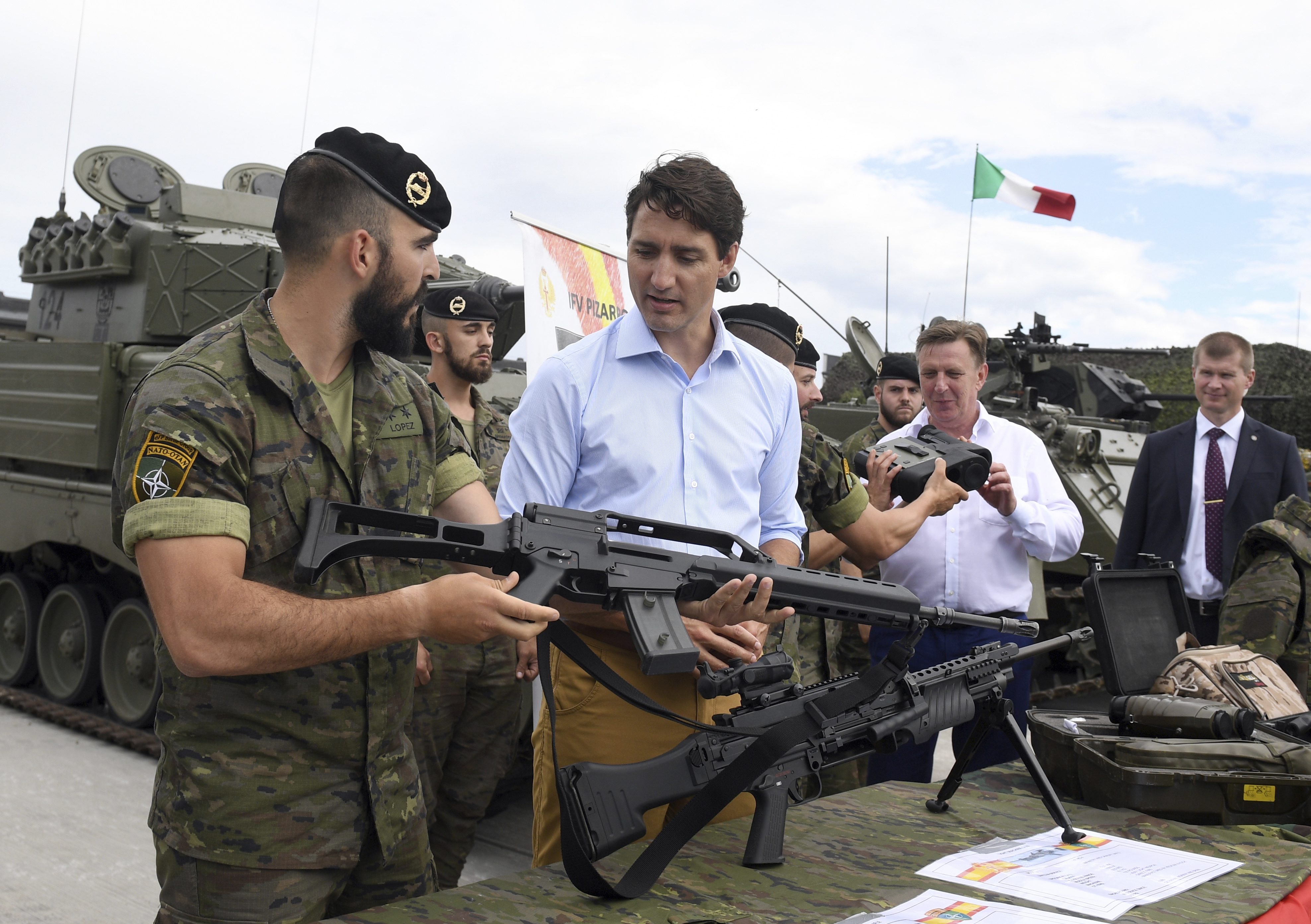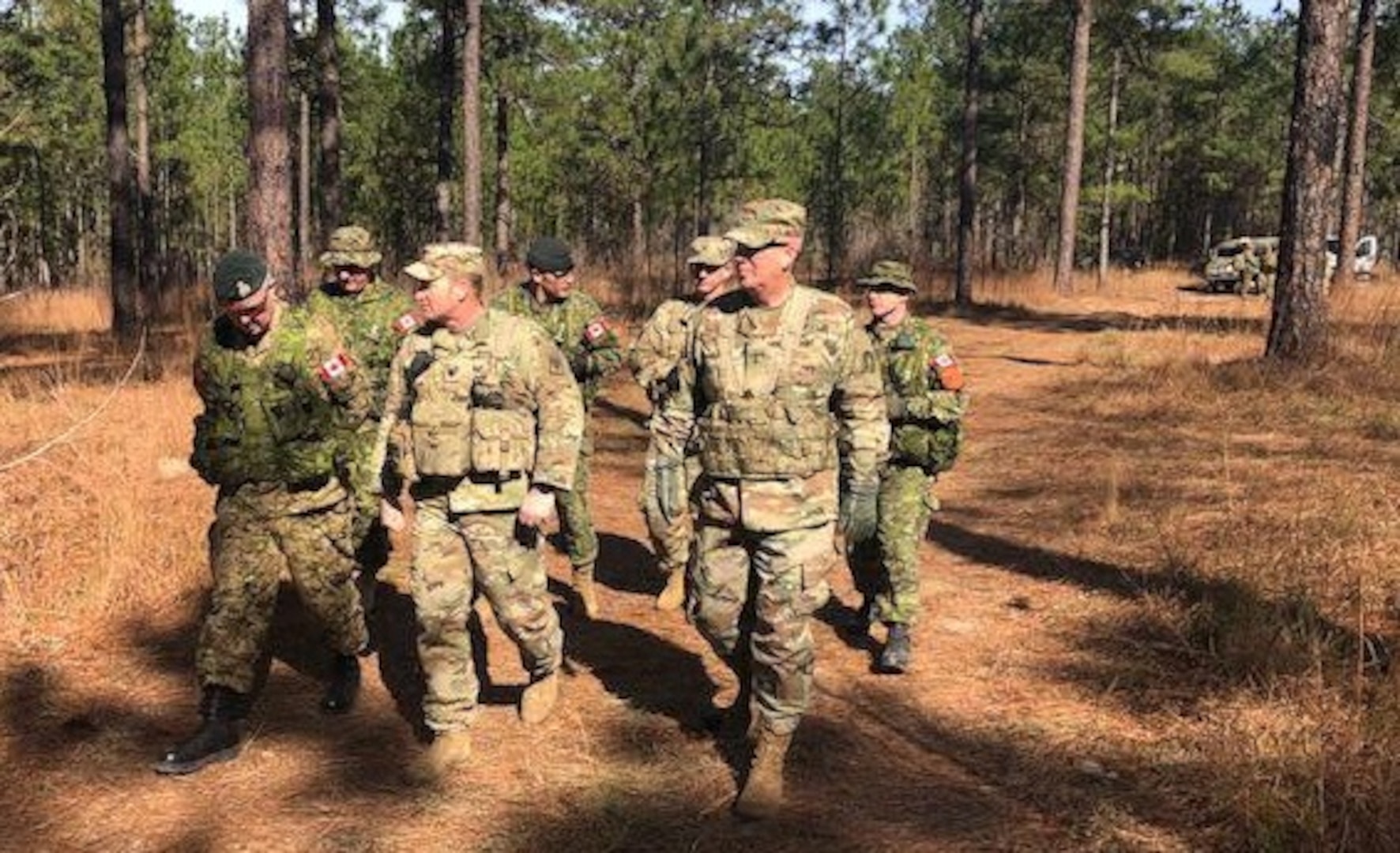Canadian Military Bases - 5.1 Members of the Canadian Armed Forces (CAF) relocate several times during their careers. The Department of National Defense and the CAF (National Defence) support members through programs, such as those that provide relocation benefits and, in some locations, a monthly allowance to offset increased living costs. National Defense also supports members by providing access to military housing.
5.2 Military housing is one of a number of housing options available to CAF members. Most housing units are single or semi-detached homes with three or more bedrooms, as most were built between 1948 and 1960 to accommodate members with families. A smaller number of units are terraced houses and flats (Exhibit 5.1).
Canadian Military Bases

Source: Adapted from Canadian Forces Housing Agency data, October 2014, which does not include leased housing units. The data should be treated as unaudited.
Star Exclusive: Canada Looking At Building Military Bases In Arctic
The first bar chart shows that there are different types of military housing units. There are 590 flats, 2,644 row units, 4,533 semi-detached units, and 4,214 single units. Finally, there are 37 other types of units, including duplexes and duplexes.
The second bar chart shows that there are 2,105 military housing units with two bedrooms, 7,518 units with three bedrooms, 2,376 units with four bedrooms, and 19 units with five or more bedrooms.
The data for these charts is adapted from Canadian Forces Housing Agency data, October 2014, and does not include leased housing units. The data should be treated as unaudited.
5.3 According to National Defence, approximately 15 percent of members live in military housing managed by the Canadian Forces Housing Agency (the Agency). Approximately 12,000 housing units are located in 25 sites and approximately 130 rental housing units are located in 3 sites (Exhibit 5.2).
U.s. Military: Why Are There So Many Bases Overseas?
This map shows the number of military housing units for the Royal Canadian Air Force, for the Canadian Army, for the Royal Canadian Navy, and for other military sites. There are a total of 28 military housing sites: 11 sites for the Royal Canadian Air Force, 9 sites for the Canadian Army, 4 sites for the Royal Canadian Navy and 4 other military sites. There are a total of 12,018 military housing units, plus 130 rental housing units.
For the Royal Canadian Air Force, this map shows the number of military housing units by location. There are 236 units in Comox, British Columbia; 854 units in Cold Lake, Alberta; 28 units in Dundurn, Saskatchewan; 161 units in Moose Jaw, Saskatchewan; 558 units in Winnipeg, Manitoba; 182 units in North Bay, Ontario; 539 units in Trenton, Ontario; 321 units in Bagotville, Quebec; 580 units in Greenwood, Nova Scotia; 417 units in Goose Bay, Newfoundland and Labrador; and 72 units in Gander and Corner Brook, Newfoundland and Labrador.
For the Canadian Army, this map shows the number of military housing units by location. There are 505 units in Edmonton, Alberta; 175 units in Suffield, Alberta; 186 units in Wainwright, Alberta; 597 units in Shiloh, Manitoba; 1,622 units in Petawawa, Ontario; 497 units in Kingston, Ontario; 191 units in Montreal, Quebec; 809 units in Valcartier, Quebec; and 1,464 units in Gagetown, New Brunswick.

For the Royal Canadian Navy, this map shows the number of military housing units by location. There are 6 units in Masset, British Columbia that are leased; 703 units in Esquimalt, British Columbia; 9 units in Matsqui, British Columbia; and 487 units in Halifax, Nova Scotia.
St Abg Commander Visits Canadian Forces Station Alert > North American Aerospace Defense Command > Newsroom
For the other types of sites, the map shows the number of military housing units by location. There are 678 units in Borden and Toronto in Ontario; 119 units in Yellowknife, Northwest Territories, which are leased; 5 units in Iqaluit, Nunavut, which are leased; and 147 units in Ottawa, Ontario.
This data has been adapted from Canadian Forces Housing Agency data, October 2014. This data should be treated as unaudited data.
Special Operating Agency - An agency within a government department that has greater management flexibility in exchange for certain levels of performance and results.
5.4 Prior to 1995, military housing was managed by individual base commanders (Army and Navy) and wing chiefs (Air Force). The apartment building was considered to be outdated and in poor condition. In October 1995, the agency was established as an interim National Defense special operations agency. He was allowed to use rental revenue in managing the housing portfolio, which included approximately 21,200 units.
Guard Continues Legacy With Record Inauguration Support > National Guard > Guard News
5.5 According to the agency, National Defense invested $400 million in the housing portfolio between 1998 and 2004, for maintenance, disposal, health and safety upgrades, and urban infrastructure improvements. However, the agency believed that more work was still needed to bring the portfolio up to contemporary standards.
5.6 In March 2004, the Treasury Board granted the agency permanent special operating agency status. A rationalization framework was also approved to reduce the number of units to 12,500 and to modernize the portfolio. At the time, there were more than 16,000 units.
Oversee military housing, provide guidance and technical oversight on the management of the housing portfolio, and oversee the Canadian Forces Housing Agency.

Ensures that military housing units are maintained to an acceptable standard, and develops and implements plans to meet the future housing needs of the Canadian Armed Forces.
Map Of The Best Hiking Trail In Every Canadian Province And Territory (part 2)
5.8 The audit focused on whether the Department of National Defense and the Canadian Armed Forces (National Defence) managed military housing in a manner that supports housing requirements, is consistent with government regulations and policies, and is cost effective.
5.9 The policies and practices used by National Defense to support decisions on military housing needs were reviewed. We also examined how the Canadian Forces Housing Agency managed military housing.
5.10 This audit is important because, according to National Defence, access by Canadian Armed Forces members to suitable housing contributes to operational effectiveness, member morale and the well-being of members and their families.
5.11 We did not examine other National Defense housing, such as training and temporary quarters and leased housing units, or programs that support the relocation of military personnel.
Canadian Army Civil Hi Res Stock Photography And Images
5.12 More details about the audit's objective, scope, approach and criteria can be found in About the Audit at the end of this report.
Findings, Recommendations, and Responses Military Housing Requirements National Defense has not clearly defined its operational requirements for military housing in a manner consistent with its policy.
5.13 Overall, we found that the Department of National Defense and the Canadian Armed Forces (National Defence) was not complying with key aspects of its military housing policy. We found that National Defense did not clearly define its operational requirements for military housing. We also found that, in some locations, it did not consider how the private housing market could meet the needs of members of the Canadian Armed Forces (CAF).

5.14 This is important because clear operational requirements help define military housing needs, including what type of housing to provide (such as house size and number of bedrooms), which members to provide the housing, and where to be provided. In addition, by knowing when the private housing market can meet the needs of members, National Defense can focus its work on locations where military housing is needed.
Multinational Eod Exercise Ardent Defender Concludes In Canada
5.16 The Canadian Forces Housing Agency (the Agency) received its status as a permanent special operating agency on the condition that National Defense followed established government policy on Crown-owned housing.
5.17 Government policy requires Crown-owned housing to be provided only where the housing directly supports operational needs, or when suitable housing is not available in the private housing market . When housing is no longer needed, the remainder should be removed from the portfolio.
5.18 Government policy also requires that occupiers of Crown-owned housing be treated equally with those renting similar housing in the private market. This means that Crown-owned houses should be similar in condition, style and price, and should not be more affordable.
5.20 What we examined. We reviewed National Defense policy and practices to determine whether they were consistent with applicable regulations and government policy, and were used to support military housing decisions.
Latvia Pleads For Us Military Assistance, Patriots To Deter Russia
5.21 Military Housing Policy. National Defense last updated its living accommodation policy in 2007, although we noted that it had been under review since 2009. The policy states that National Defense can provide military housing only in locations where there is an operational requirement, or where that the private housing market cannot meet the needs of CAF members.
5.22 The policy further states that housing affordability should be addressed, where it occurs, through compensation. Housing should not provide a right or benefit to members, and all members should have equal access to suitable housing.
5.23 This policy is supported by the National Defense Living Accommodation Guidance. The instruction defines the standards that apply to military housing, particularly living space and the number of rooms, as well as the rules that govern how and which members can access and occupy housing.
5.24 Therefore, we found that National Defense policy is generally consistent with government policy. However, we also found that National Defense did not comply with the following two key aspects of its own policy.
Canadian Evacuees From China To Be Quarantined At Ontario Military Base
5.25 Operational Requirements. Firstly, we found that National Defense did not clearly define its operational requirements for military housing in order to decide what housing to provide, which members to provide it to and where to provide it.
5.26 In the past, National Defense only allowed members to live in military housing if they were married or had families, although there were exceptions for single members based on availability. The 2007 National Defense policy, however, states that all members are eligible to live in military housing and that units should be allocated on a first-come, first-served basis according to household size.
5.27 In 2010, National Defense engaged an external panel to examine and report on the required number of military housing units. For the purpose of this review, National Defense approved principles applicable to the provision of military housing, some of which differed from those in the 2007 policy. For example, the 2007 policy states that, in allocating military
Abandoned canadian military bases, secret canadian military bases, army military bases, military bases, civilian jobs military bases, air force military bases, toxic military bases, canadian military bases map, canadian military bases worldwide, list of canadian military bases, canadian military bases in bc, canadian military bases in germany


0 Comments